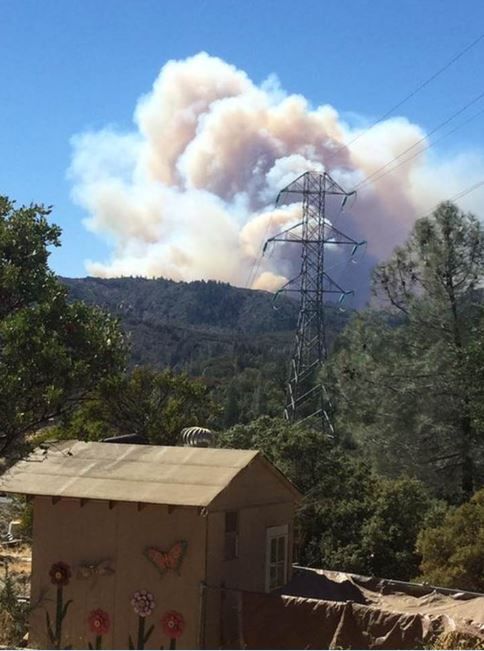S.F.’s 97 Degrees: One of At Least 10 Daily Temperature Records Set Across Bay Area
The Bay Area recently endured a historic heatwave, with temperatures skyrocketing to record levels across multiple regions. San Francisco’s sweltering 97-degree day was just one instance of extreme weather, as many other cities also set new daily temperature records. In this article, we’ll delve into the specifics of the event, examine the causes behind the heatwave, and assess its effects on the environment and local communities.
The Scorching Temperatures in San Francisco
San Francisco, famous for its mild and frequently foggy climate, is rarely linked to extreme heat. However, during this heatwave, the city hit a blistering 97 degrees, breaking past daily temperature records. With the average temperature for early October typically around 68 degrees, this significant heat surge was far from ordinary.
Meteorologists noted that this was one of the hottest days the city had seen in years. The extreme temperatures were fueled by a combination of high-pressure systems, offshore winds, and changes in ocean currents, which caused a dramatic rise in temperatures along the coast.
Other Bay Area Cities Setting Records
While San Francisco made headlines, it wasn’t the only city facing record-breaking heat. Across the Bay Area, at least ten daily temperature records were shattered. Noteworthy figures include:
- Oakland: 96°F, exceeding its previous high of 93°F for this time of year.
- San Jose: 98°F, surpassing its earlier record of 96°F.
- Concord: 101°F, establishing a new October high.
- Livermore: 103°F, marking the season’s hottest day.
These extreme temperatures spanned from coastal regions to inland areas, affecting both urban and rural communities alike
Causes Behind the Bay Area Heatwave
The heatwave was primarily attributed to a persistent high-pressure system sitting over the western U.S. This atmospheric phenomenon traps heat and suppresses cloud formation, leading to prolonged periods of warm weather. Additionally, offshore winds played a significant role, pushing warm, dry air from inland regions toward the coast, further elevating temperatures.
This pattern is not uncommon during the fall months in California, and it is often referred to as “fire weather” due to the dry conditions and elevated fire risk it creates. However, the intensity of this particular heatwave has raised questions about the role of climate change in amplifying such events.
Impacts on Local Communities
The heatwave had wide-ranging impacts across the Bay Area, from public health concerns to environmental effects:
- Health Issues: With temperatures spiking, residents, especially the elderly and vulnerable populations, were at higher risk of heat-related illnesses such as heatstroke and dehydration. Cooling centers were opened across various counties to relieve those without air conditioning.
- Energy Demand: The extreme heat increased electricity consumption as residents relied on air conditioners to stay calm. The state’s energy grid was strained, with authorities urging people to reduce their power usage during peak hours.
- Wildfire Risk: The combination of high temperatures and dry conditions heightened the risk of wildfires. Several smaller brush fires were reported, though firefighters were able to contain them quickly.
Climate Change and Future Heatwaves
While heatwaves are not uncommon in California, there is growing evidence that climate change makes them more frequent and intense. As global temperatures rise, so do the chances of experiencing more extreme weather events. According to data from the National Oceanic and Atmospheric Administration (NOAA), the average temperature in California has increased by nearly 3°F over the last century.
Scientists caution that without decisive action to cut greenhouse gas emissions, the Bay Area and other regions could experience more frequent and intense heatwaves in the years ahead. The ripple effects of these changes are extensive, impacting everything from water availability to public health and infrastructure.
What’s Next for the Bay Area?
Following the heatwave, cooler temperatures are anticipated as the high-pressure system weakens. However, experts warn that the Bay Area remains susceptible to future heat events, especially in the fall when wildfire risk peaks.
In response, cities throughout the region are implementing strategies to lessen the impact of extreme heat.Efforts to combat the effects of extreme heat include expanding green spaces, improving public cooling centers, and fortifying the energy grid to handle the increased demand during heatwaves. At the individual level, actions such as conserving water, installing energy-efficient appliances, and staying informed about weather patterns can play a significant role in reducing the impact of future heatwaves. These small yet crucial steps contribute to larger efforts aimed at minimizing the strain on resources and infrastructure during extreme weather events.
Conclusion
San Francisco’s 97-degree day is a stark reminder of how extreme weather can disrupt areas typically shielded from such conditions. With at least ten other Bay Area cities breaking daily temperature records, this heatwave serves as both a wake-up call and a glimpse into the future in a warming world. Tackling future heatwaves will require a combination of community action, individual responsibility, and comprehensive environmental planning.
Although this heatwave has passed, one critical question persists: How will the Bay Area—and the world—adapt to an increasingly frequent occurrence of extreme weather events?

Leave a Reply